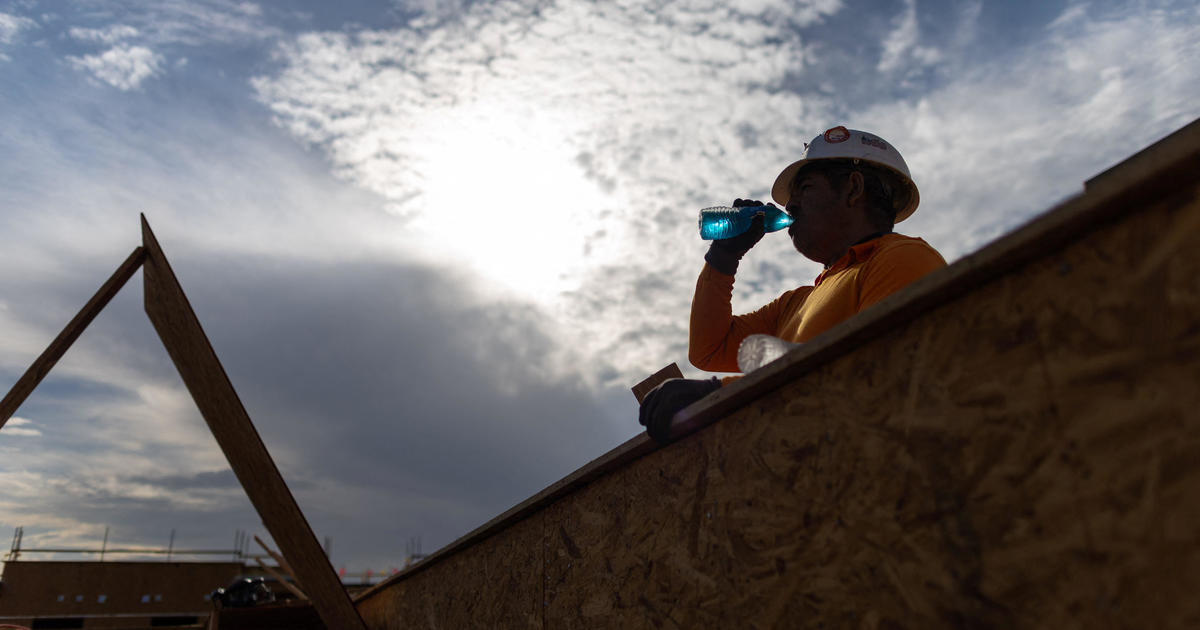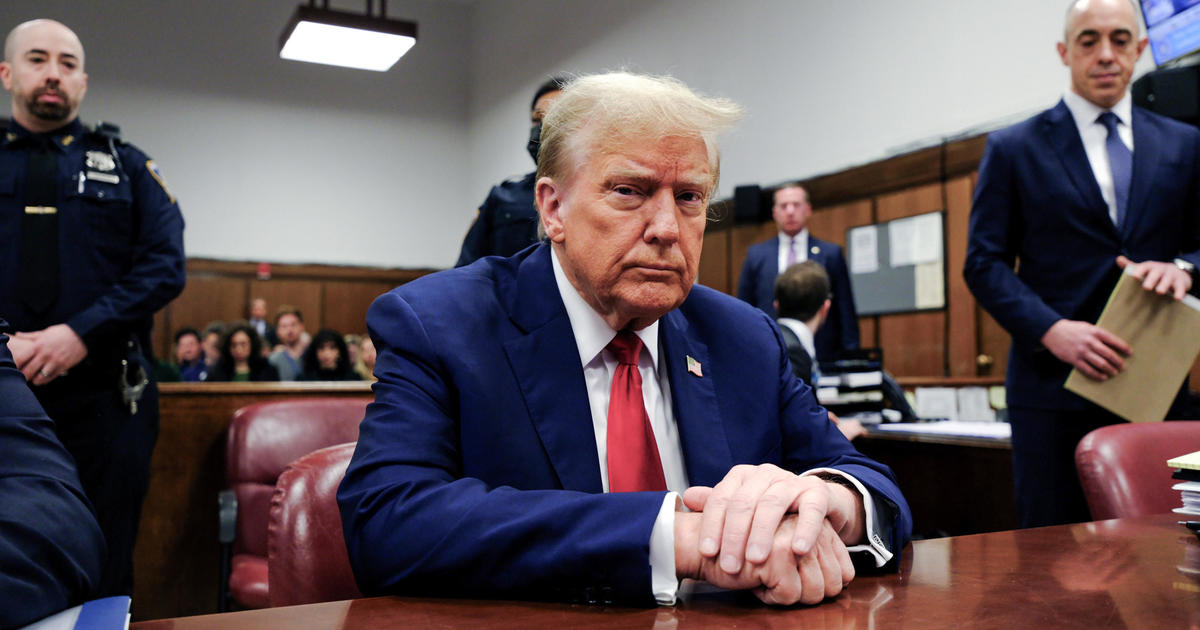Here's who the U.S. tariffs on Mexico would hurt most
- Tariffs on Mexico would hit America's No. 1 supplier of vegetables, jeans and car parts to the U.S., forcing people to pay more for essentials.
- Last year's China tariffs cost the typical U.S. household an added $400—Mexico could double that figure.
- Wealthy people buy more products that carry no tariffs and they have more resources to absorb higher prices. For low-income people, tariffs have the effect of a 25% tax hike.
The tariffs on Mexican imports that are set to go into effect Monday at 5% and escalate to 25% by October threaten to raise prices on a wide range of consumer goods, pushing the price of an avocado above $2.20 and adding $1,500 to the price of a new car.
Last year's tariffs on Chinese imports cost the typical U.S. household an additional $419 a year, according to a recent New York Fed study. With those China tariffs potentially doubling, and the proposed addition of new tariffs on goods from Mexico, the hit this year could easily double this year and grow even bigger in 2020.
But the impact won't be felt equally by rich and poor. The people who are likely to take the biggest hit are the lower-income Americans who'll be forced to pay more for essentials, and workers in heartland states whose economies are tightly intertwined with our southern neighbor. Here are some of them:
Michiganders
While Texas and California import the most goods from Mexico, the state likely to feel the greatest impact from the U.S. tariffs is way north of the border: Michigan. More than 10% of Michigan's economic output relies on Mexican imports, according to an analysis from the U.S. Chamber of Commerce. That's largely because of the auto industry's prevalence in the state. Car and truck makers have come to depend on an uninterrupted flow of goods across the border; in fact, cars and car parts are America's biggest imports from Mexico.
"It's not at all uncommon for there to be one stage of production in Mexico, another in the U.S., then Mexico, and a product will cross the border six or seven times before it's sold," said Ray Perryman, CEO of the Perryman Group, a Texas economic consulting firm.
In addition to Michigan, other manufacturing-intensive states that would take outsized hits from the higher cost of Mexican imports include Ohio, North Carolina and other Atlantic Coast states.
"The primary effects are going to be in areas that manufacture electronics and the areas that manufacture cars," Perryman said.
Grocery shoppers
Mexico is the U.S.' biggest source of agricultural imports. During the six months ending in March, two-thirds of fresh vegetable imports and one-third of fresh fruits came from Mexico, according to the Department of Agriculture.
Unlike cars, food isn't easily shifted to other countries—many of the products the U.S. relies on, especially in the winter months, can only be grown in Mexico.
"Probably 80, 90% of all the jalapenos in Chicago right now are Mexican grown," Peter Testa, a produce importer in Chicago, told CBS News, rattling off a grocery list of other imports. Cucumbers, blackberries, watemelons, green onions, papayas, all come from Mexico right now.
With grocers' low profit margins, they're less able to absorb higher costs and more likely to pass them on to their consumers.
"You'll see 3-to-4% increases, but it's across a wide variety of products, and it's very, very likely Mexico will retaliate," Perryman said. "That will have a high impact on the agricultural products we send to Mexico."
"Even if the 5% doesn't happen, the havoc it produces is overwhelming," said Steve Sando, CEO of Rancho Gordo, an heirloom bean company in California's Napa County. "Everyone talks about auto parts, but food is a huge issue. Crops are crops -- it takes eight months to grow them and it takes years of planning."
If the tariffs start to take effect Monday, Sando plans to increase the price of the roughly dozen varieties of beans he imports by 5%, and donate the added funds to "No More Deaths," a group that provides relief to migrants crossing the southern border.
"I've never dealt with tariffs," he added. "As an American citizen, I'm not really clear about where that 5% goes. Does it go in the general coffer? I'm sure it's not going to be distributed to me to help me."
Poor people
U.S. tariffs on Chinese imports have fallen mostly on low- and middle-income Americans, according to several analyses—and the same pattern is likely to repeat itself with Mexico. Executives at Walmart, Macy's, Dollar Tree and Dollar General have warned that their companies will raise prices to offset the increased costs of buying Chinese goods, a hike that will disproportionately impact the lower-income consumers who make up most of their customer base.
There are two major reasons that poorer Americans are more exposed to tariffs than wealthier ones, Jay Shambaugh, a senior fellow at the Brookings Institution, told the Associated Press. First, poorer Americans tend to spend all of their income, while wealthier Americans have enough left over to save and invest. That means the poor have less means to absorb higher prices.
Wealthy people are also more likely to buy services or goods that aren't subject to tariffs, such as gym memberships, entertainment or restaurant meals. Poorer Americans spend a higher percentage of their income on basics, such as clothing and groceries, that are more likely to be imported.
Marlene Grimes, a 74-year-old retiree, told the AP she has noticed higher prices for dairy goods and vitamins at the drugstore near her Phoenix apartment. If they were to go even higher, she said, she would have to visit the local food pantry more often.
"I'm on a fixed income," she said. "If it goes up on what you buy, you just don't buy it."
Denim lovers
Mexico is the eighth-largest supplier of clothing to the U.S., trailing countries such as China, Vietnam and India. But when it comes to men's blue jeans—that quintessential American staple—Mexico is Numero Uno. Nearly 40% of men's denim bottoms sold in the U.S. come from Mexico. Retail analysts have warned that tariffs could hurt the likes of Wrangler and Levi's.
Under NAFTA, U.S. apparel makers enjoyed duty-free trade with Mexico, which made the clothing production process look a bit like the auto supply chain. Today, cotton and other textiles grown and made in America are shipped across the border to be turned into clothing. Those items then return to the U.S. to be sold to consumers, according to Rick Helfenbein, president and CEO of the American Apparel & Footwear Association, an industry trade group that opposes the Trump administration's proposed tariffs.
"If you put more than a 10% tariff on our products, there goes our profit margin," he said.
While a large company might be able to absorb a 10% tariff by cutting its profit and asking manufacturers and retailers in their supply chain to do the same, a 25% tariffs means "all bets are off," Helfenbein said. "That's not sustainable in our business. We will be forced to move out… because we don't have any choices."



